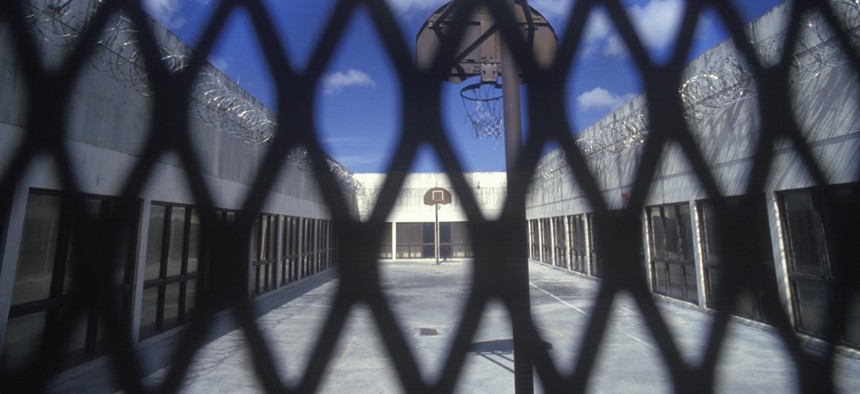How One of the Nation’s Largest Jails Tracks Inmates

Dade County Jail in Florida Joseph Sohm / Shutterstock.com

Connecting state and local government leaders
In Cook County, Illinois, the Department of Corrections is able to not only keep rival gangs separated behind bars but also make sure to not assign arthritic prisoners to the top bunk.
Fearing mass data loss from a potential crash, the Cook County Department of Corrections in Illinois switched to a system last fall that manages offenders from intake to release and through probation and parole.
The Cook County Jail in Chicago admits nearly 100,000 detainees annually, making it the largest single-site pre-detention facility in the United States.
Inmates are processed busload after busload, a time drain, and whenever they’re left standing around it’s a safety risk that CCDOC all but eliminated with rapid booking.
“They’re comfortable they’ve integrated health records with the system to house people appropriately,” Josh Jaquish, Tribridge vice president of public sector and industry, told Route Fifty in an interview. “At any given point in time they know where every inmate is in the county jail, and that’s something they’ve not had before.”
In October, Tampa-based tech services firm Tribridge took Offender360 live in Cook County, and almost a year in its real benefit has proven putting data in the system to use.
Inmate demographics are captured during booking to ensure rival gang members aren’t placed in a cell together, and nonviolent offenders are kept away from violent offenders.
Alerts can be created, so the jail’s medical staff is notified when a new diabetic inmate is processed. An offender known to have arthritis will never again be given the top bunk.
“The high-demand item is not the ability to do daily processing but to get information out of the system,” Jaquish said. “Inquiries from politicians asking why so-and-so was released and people being held longer or released earlier are making headlines, so this allows users to go in and set proactive alerts with dashboards to prevent mixups.”
The system can also track and manage inmates across multiple facilities, coordinate programs, monitor sentences, and schedule visitations and drug tests.
Corrections officers weren’t immune to the fallout from high-profile police-involved killings of black men in places like Ferguson, Missouri, and Baltimore.
Prisons and jails are worried about use of force, so a corresponding module was added to the Offender360 system in May allowing for security video to be catalogued and reviewed. The recordings are stored more cost-effectively in the cloud.
Departments can set parameters so they’re notified if an officer hits a certain number of use-of-force incidents and is in line for training or relocation to another facility. Sexual harassment, workers compensation and internal affairs modules are also part of the system.
The 2011 passage of Assembly Bill 109 in California saw to it non-serious offenders were sent to county jails and supervised by local probation officers instead of state prisons and parole agents.
Offender360 provides its California county clients with additional flexibility to find the space needed to handle the longer incarceration periods and respond to any future changes in requirements with updates and upgrades.
“Most counties are dealing with AB 109 with existing systems and looking to aggressively make the move to a new system that will let them stay with the same system for the next dozen years, even when the next AB 109 comes out,” Jaquish said.
(Photo by Joseph Sohm / Shutterstock.com)
Dave Nyczepir is News Editor at Government Executive’s Route Fifty.

NEXT STORY: What Actions Can Seaside Jurisdictions Take to Ward Off Shark Attacks?





